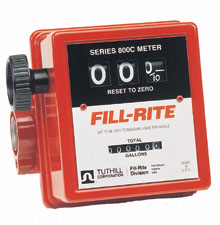By: Art Freeman
Two Ways To Make A
Refueling Station
Disclaimer:
Warning: The Challenger BTT web site, any of its committee members or private party, Larry Davis, does not endorse or encourage anyone to build either refueling station! Gasoline is very flammable and a spark may cause a fire and/or injury! Depending on fuel storage location, may be prohibited by property owner or local law ordinance.
Why spend the money for this elaborate of a refueling station for your plane? Well, it's a bit pricey, but if you are sporting "wing tanks" where you need to get up on a step ladder to refill your fuel tanks, I doubt you would like it very much having to lift and try pouring fuel from a 5 gallon can into the tanks. Also, I have never seen a 5 gallon fuel can "NOT LEAK" from around the fuel spout. Don't know about you, but I sure would not like having gas running down my wings and onto the Lexan windows. Additionally, if you have the cash for this type of setup, you would be far better off using this "CLEAN" way of refueling then trying to use those leaky 5 gallon cans to refuel your bird, even for the standard 10 gallon, in fuselage fuel tank. When refueling my Challenger II, I can pump 20 gallons faster then I can pump gas at a gas station into my car. This is a really good and clean outfit for refueling your plane. Setup: |
| Fill-rite Meters Provide Precision And Durability In A Cost-effective Design. The Series 800c Meters Exclusive Unicast Component Mounting Configuration Assures Consistency, Particularly In Gravity Flow Applications. Fill-Rite's line of mechanical meters are designed to meet the stringent demands of customers who need to monitor fuel usage accurately and dependably. Rugged construction, easy to read numbers, and the flexibility of horizontal or vertical positioning are just three features of these superior meters. Plus, all can be field calibrated for the utmost accuracy, regardless of the fluid. |
|
 |
| For best pricing on the John Ellsworth Company fuel pumps and meters, look at their eBay site store. Pricing will be higher at the John Ellsworth Company catalog sales and internet site. |
$119.00 - Fuel Meter $50.00 - Aprox. Shipping on Pump & Meter $10.00 - 20 Gallon Neoprene Fuel Barrel $65.00 - Dolly $55.00 - 12v Jump Start Battery Pack $6.00 - 3 ea. Alligator Battery Clamps $5.00 - 1 ea. Tie Down ----------- $508.50 - TOTAL |
After breaking my back bending under the wing of my Challenger to refuel, I built a re-fueling station. I used to dread coming back to the airport and having to pour gas for 20-30 minutes after each long flight. |
| $120.00 For this system. |